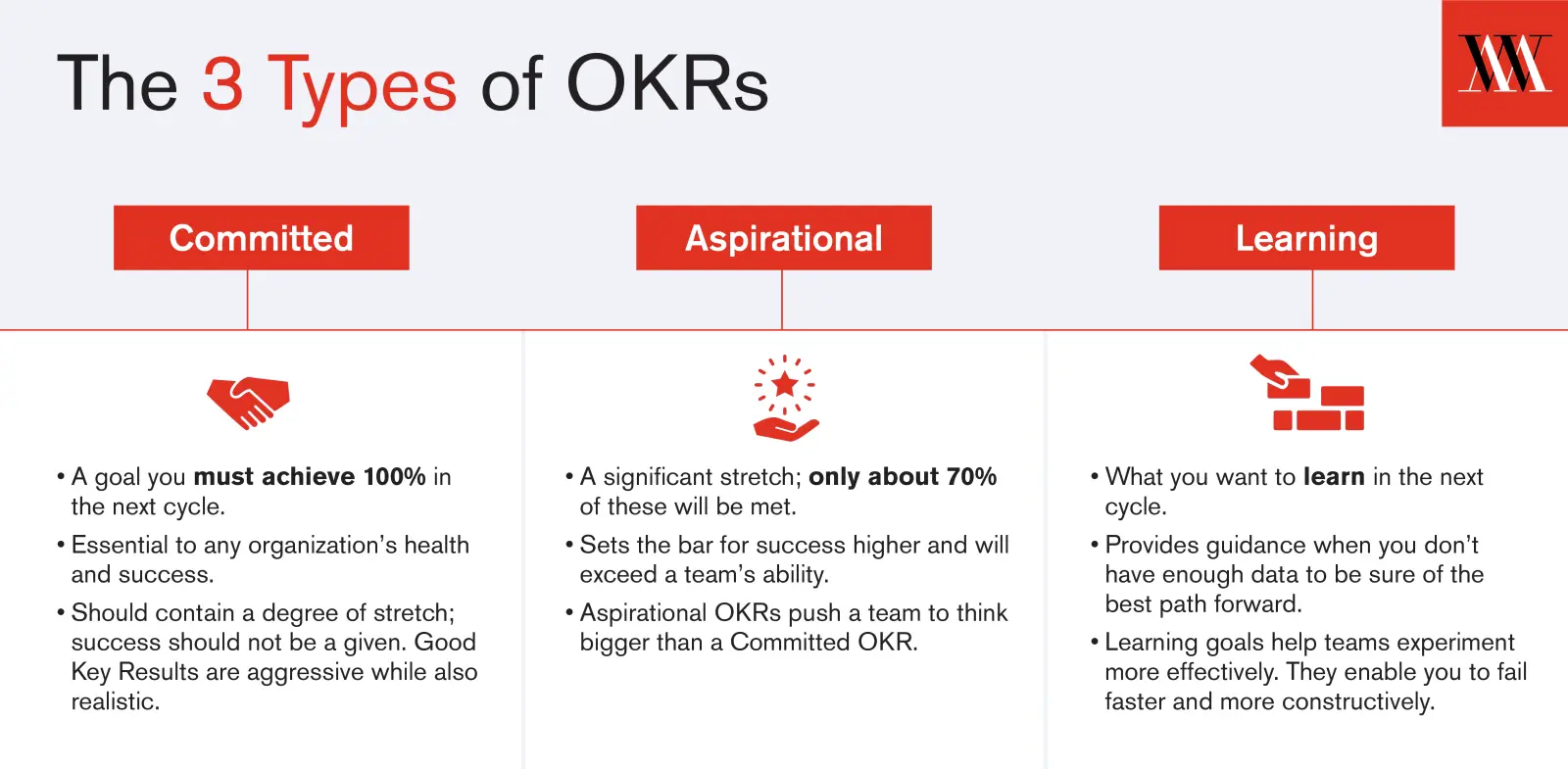For many teams, it’s tempting to set only committed or aspirational goals. But what should you do if your team isn’t sure if it’s headed in the right direction?
Sometimes learning is a valuable outcome in and of itself. It may not make sense to set a growth target or focus on a single metric until you know more. By the same token, teams tend to be leery of initiatives where there are too many unknowns, leading to being overcautious towards what might be a good idea. In this case, committed or aspirational goals might not uncover the value of that idea.
Aspirational OKRs were the original — and only — kind of OKRs that Andy Grove introduced to Intel. Since then, the OKR system has evolved, with Google splitting them into two types of goals: committed and aspirational. But as What Matters has spent time with more teams who are trying to do “new” things, we’ve uncovered a third: a learning OKR.

Three types of OKRs
Committed Goals:
Goal-setting commitments that an individual, team, or organization has agreed will be achieved. Resources and schedules should be adjusted to make sure they are 100% complete.
Aspirational Goals:
Goals that reflect how we would like the world to look. They force your teams to stretch, where reaching 70% is considered a success. In Measure What Matters, “Aspirational Objectives reflect bigger-picture, higher-risk, more future-tilting ideas.”
Learning Goals:
OKRs that encourage teams to explore or experiment. What are we trying to learn? What hypothesis are we trying to prove? Your Key Results will help you determine that.
Notice that when you set a learning OKR, the question your team will often shift from asking, “What are we trying to accomplish in the next 90 days?” to “What are we trying to learn in the next 90 days?”
Learning OKRs are best for defining success when the outcome is uncertain or undefined, as in the case of the mobile language-learning app Duolingo.
After a series of unsuccessful experiments for audio narratives, Duolingo’s product manager, Conor Walsh, used learning goals to turn a product around that was facing a decline in users.
Walsh decided that rather than focus on increasing traffic, he would instead focus on learning more about the users.
Here is one of the team’s Objectives:
With a learning approach, Walsh and his team were able to identify a set of user experience pain-points, enhance the mobile experience, and gain 60,000 new users.
Setting goals for experimentation encourages teams to explore new directions, while still ensuring a methodical approach to evaluate success.
How to use learning OKRs
Learning goals don’t have to be just for start-ups or R&D environments. Learning goals can include trying out new systems or methods, or experimenting with new ways to meet a challenge.
When drafting your learning OKR, it’s important to keep the following in mind:
✔ Focus on what you don’t know and would like to. The purpose of a hypothesis is to find the answer to a question. So don’t be afraid to ask really big questions such as “What is our product model?” or “What is our business model?”
✔ Remain open-minded towards unexpected outcomes. You may discover that something that works, kind of works, or doesn’t work at all. Experimental goals are all about the journey. It’s important to regularly check-in and discuss all of your Objectives. But, because experimental Objectives come with such unexpected results, it’s especially important to review, analyze, and communicate your results regularly.
Where can I find more information?
Are you or your team struggling with establishing shared experimental goals? We’d love to hear from you about them. Be sure to check out our FAQs, Stories, and Resources, or sign up for our Audacious newsletter.
Or, if you are looking for an OKR coach, check this out.
If you’re interested in starting our OKRs 101 course, click here.
